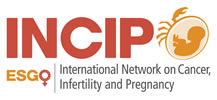Radiography
Diagnostic imaging is often required during pregnancy to evaluate maternal or foetal disease. When the diagnosis of cancer is made during pregnancy, using radiographic imaging to determine accurate staging is an options, but the state of the pregnancy should be taken into consideration.
The effect of radiation on foetal life is dose-dependent and directly related to the stage of gestation: the earlier in stage, the more detrimental the expected effects.
It should be noted that in many cases, the perception of teratogenic risk is higher than the actual risk. Although the safety of radiation exposure during pregnancy is a common concern, a missed or delayed diagnosis can pose a greater risk to the patient and her pregnancy than any hazard associated with ionizing radiation. Treatment delay is an important poor prognostic factor in cancer during pregnancy. Where possible, non-ionizing imaging studies are preferred, including ultrasonography and Magnetic Resonance Imaging (MRI).
Before any staging procedure is performed, an interdisciplinary discussion should be held to decide on the preferred examination(s). This strategy prevents the cumulative radiation that is associated with different (and sometimes overlapping) examinations.
Ultrasound
Ultrasound uses sound waves that interact with biological tissues, introducing the potential for deleterious consequences from heat and cavitation. No biologic effects have been documented from diagnostic ultrasound in the pregnant patient despite intensive use over the past three decades. Therefore, where applicable, this examination is preferred during pregnancy.
MRI
Although there is no conclusive evidence that the use of clinical MRI produces deleterious effects on human embryos or foetuses, the safety of MRI procedures during pregnancy has not been definitively proved. Although the risk of exposing the developing foetus to any radiologic diagnostic imaging technique that uses ionizing radiation is probably greater than the theoretical risk of MRI, it is not recommended during the first trimester because the developing embryo is susceptible to injury from various physical agents.
Despite some concerns, there are no reported harmful effects from MRI of the pregnant woman or foetus. In some cases, MRI is the preferred diagnostic modality because it may provide better images than ultrasonography while avoiding the ionizing radiation of computed tomography. In addition, MRI has the advantage of excellent tissue contrast and depicts pelvic anatomy in three planes even without the use of contrast agents, and, therefore, can be used to calculate tumour volume and try to assess spread to adjacent organs. Also lymph node metastasis might be detected using MRI. If contrast agents (gadolinium) are necessary, the benefit to the mother must outweigh the theoretic risks to the foetus.
Nuclear medicine
Nuclear medicine studies (pulmonary ventilation-perfusion, thyroid, bone, renal scans, etc.) use a radioisotope bound to a chemical agent. The effect of these substances on the foetus depends upon placental permeability, foetal distribution, tissue affinity and the half-life, dose, and type of radiation emitted. Foetal exposure also results from proximity to radionuclides excreted into the maternal bladder; maternal hydration and frequent voiding or the use of a bladder catheter can reduce this exposure. 18FDG-PET may be performed during second and third trimester of pregnancy, when appropriate measures are taken to minimize the dose.
Sentinel lymph node biopsy during pregnancy seems to be relatively safe for the embryo/foetus. The reason for this is that low dosages are used and that the lymph nodes capture 90% of the radioactivity. A physicist is able to calculate the foetal exposure and risk on an individual basis.






